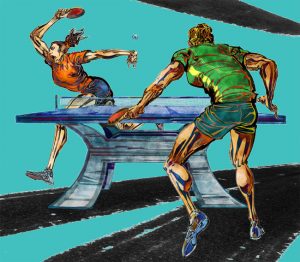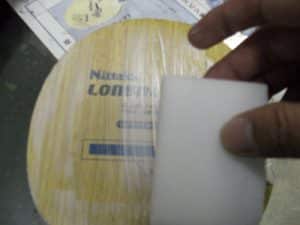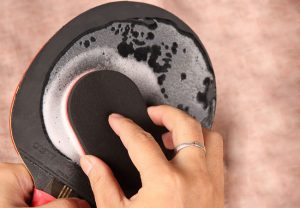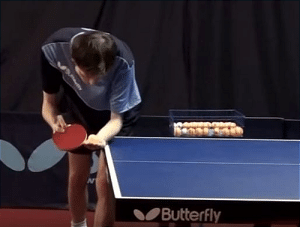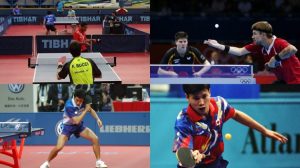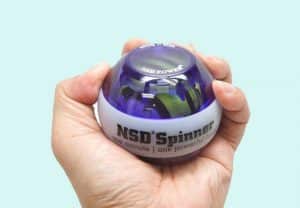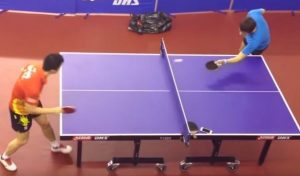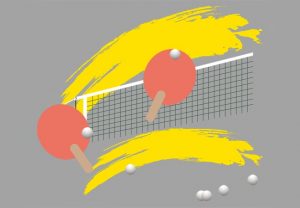Table of Contents
ToggleBackhand Topspin
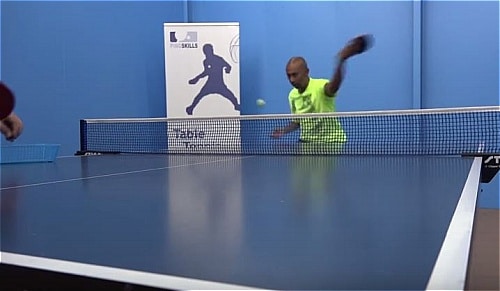
Objective:
Basically, there are two main types of table tennis backhand topspin techniques: the topspin against block and loop. This tutorial demonstrates how to perform backhand topspin loop which is commonly used against backspin ball. This is an advanced technique which has a lot of different styles to control the spin. This tutorial will, however, introduce a common one.
When to Perform This Technique:
The backhand topspin loop is basically used against backspin ball.
How to perform:
Step 1: Prepare position (for the right-handed players)
1.1 The feet position should be square on while the left foot potentially is just slightly ahead and point toward the position you want the ball to go.
1.2 Your weight should be equally distributed during this prepare position step.
1.3 Your bat height should be around your chest (same as a backhand counter hit ready position)
1.4 At this step your bat’s face should still be in the middle and not be turned into backhand side yet.
1.5 Left the distance from the table around 60–70 centimeters (further than normal backhand counterhit)
2.1 The backswing starts slightly before the ball hitting the table
2.2 Turn your bat into the backhand side as well as pull it down back to just slightly below your stomach (lower than normal backhand counterhit)
2.3 Bend your knee down
2.4 Transfer your weight into the right leg.
2.5 The backswing should finish at the bouncing time.
Step 3: Contacting the ball backhand loop
3.1 Wait until the ball coming near you. Do not try to approach the ball while it is still far away.
3.2 Start accelerating your bat when contacting the ball (brushing up)
3.3 Spring your knee up to increase power.
3.4 The brushing angle depends on the power of coming backspin ball (more vertical for higher backspin)
Backhand loop
Step 4: Finish Position
4.1 Your bat’s height should be around forehead level (higher than normal backhand counterhit)
4.2 Your weight and body should be now balanced between left and right.
4.3 You should then return your posture to the ready position.
Blocking Topspin Loop
Objective:
The heavy topspin ball (loop) is potentially problematic for beginners to counter. Even though there are various ways to counter the loop, such as blocking, punching, backspin, and topspin counter. This tutorial will, however, demonstrate the simplest method, “blocking”.
When to Perform This Technique:
Returning a heavy topspin ball (loop)
How to perform:
There are a couple of key things to remember
1) Bend the face of your bat down, otherwise, the ball will bounce from your bat very high and eventually fly out of the table.
2) Relax and lose your wrist to soften the spin. If you hold your bat too tight, your bat will absorb the spin ball directly.
3) Stand not too far from the bouncing point. If the loop is short, you need to approach the ball by stepping your right foot in (for a right-handed).
4) Do not move your bat forward while blocking the ball.
Backhand Counterhit
Objective:
This tutorial demonstrates how to perform backhand counterhit. This is the second basic stroke you should learn after the forehand counterhit. Once you master this technique you will be able to learn other higher techniques, such as backhand topspin, block, and smash easily.
When to Perform:
Use against flat, and light topspin in the backhand side. Even though it generates less power than the forehand stroke, it offers more variety of directions and paces.
How to Perform:
Step 1: Ready Position
1.1 Your bat should be around a stomach level with the backhand
1.2 Keep your elbow into a comfortable distance from your body (approx 20-30 centimeters)
1.3 Your body should be faced forward in the direction of the ball and leaning slightly forward.
1.4) Knees are bent like the forehand stroke.
1.5 Feet also toward against the direction we want the ball to go. Left and right foot should be on the same level.
Step 2: Prepare to hit
2.1 Wait until the ball starts bouncing and the bat should be slightly backward
2.2 Move your head a bit lower to enhance your vision of the ball.
Step 3: Beginning of the Stroke
3.1 The angle of your bat should be around 30 degrees to your body.
3.2 Your hips, shoulders still remain in the same position
3.3 Push the bat forward by stretching your arm to the front.
3.4 You can adjust the speed and power of the ball by controlling your pace. The quicker your stretch your arm the more power and speed it will be.
3.5 At the time you are hitting the ball, push your leg a little bit up to increase the speed.
Step 4: Ending position
After Hitting the ball, follow through by turning your bat over. The forehand side should toward the roof.
You bat level should be around the shoulder height.
Master the Backhand Loop in Table Tennis
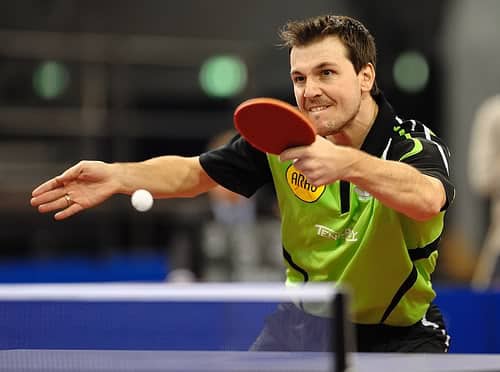
If you are looking at improving your table tennis game or becoming more competitive in ping pong, the backhand loop is one of the most important moves that you can learn. The backhand loop is best executed when returning a serve that is long or high on your end of the table.
Being a very aggressive offensive move, it is often difficult for many people to execute effectively, but learning it can help you to accumulate many points over time and make you one of the more competitive ping pong players in your league or even just amongst your friends.
In addition to helping you to accrue more points in your table tennis game, the backhand loop is a great way to give yourself the upper hand in any game of table tennis. When anticipating a serve, you should be in a ready stance as if you are about to execute a forehand return.
Your left foot should remain slightly in front of the right, with your weight shifted to this side. However, you should stand a bit more to the opposite side of the table than if you were returning with the forehand.
To execute a backhand loop, your ping pong paddle should be held in front of you, behind the ping pong table, and just to the outside of the position of the ball. Holding your ping pong paddle just to the inside of your left knee will help you to generate some additional topspin on the return as well.
You can hold your other arm out to the side to give you more balance when in this position. For the backhand loop, it is important that most of your movement comes from the forearm. Your wrist should be cocked back slightly and your elbow lifted in order to allow for the right amount of force.
When the ball comes toward you, keep your eye on it, and when the moment is right, both the elbow and the wrist should snap forward to deliver the ball upward in a rapid motion.
The backhand loop may be a difficult move to master, but the repeated practice of getting it right can be rewarding not only in terms of the sense of accomplishment generated but also in terms of points and games won.
When learning the backhand loop, it helps if you can watch others perform this move as well, and practice over time can make you a much more effective player.
Tips For A Better Backhand Loop
-
- Practice makes perfect. Practice, practice, practice.
- Head and neck aim at the ball.
- Shoulder and arm keep up above the table, and better yet if you can keep above the net. You will have better timing if you make contact at the top of the bounce which is above the net.
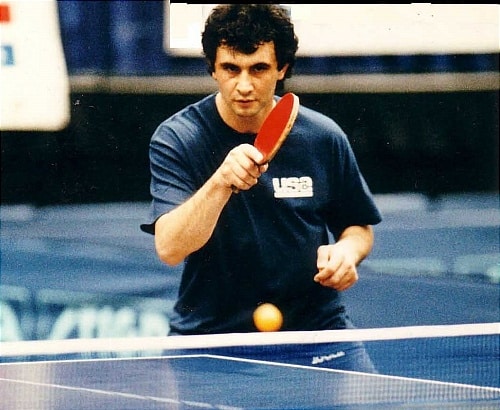
- Use all the parts of your body. This sounds difficult, and it is. There is no silver bullet and there is no way around it. It takes lots of practice, but the reward is sweet. Use your wrist for backswing.“Open” your forearm to utilize the twisting power of ulnar, radius and forearm muscles. “Open” your upper arm to utilize the twisting power of humerus, biceps/triceps, and shoulder muscles. Flex the shoulder to gather force. Twisting your torso to wind up energy for the explosive force. Bend your knees to utilize the power of your legs.
- Remember that it can generate more torque, you will have a more powerful stroke. Torque equals force times distance. The twisting powers will give you a better torque. The twisting powers come from the legs, torso, shoulders, upper arm, forearms, and the wrist.
- Timing is still the utmost in importance. “Catching” the ball when it is on the way up is the optimal time. The trick here is not to catch the ball early but to catch it “earlier” You need to practice to catch it at the proper time.
- Confidence is also important. It takes a lot of time and practice to get a decent backhand loop. Many have tried and failed. You need to remember that failing is part of the game. To have a good backhand loop, you have to believe in yourself and that if someone can do it, so can you.
- Last but not least, you have to use it in real games or competition. You may lose and lost a lot, but in the long run, it will get better. No progress is without pain and no sweeter is a success than one that has endured many pitfalls along the way. Good luck!
For the 2015 table tennis tournament, Xu Xin pulled off the most incredible behind the back shot that intrigued every audience who are watching the match.
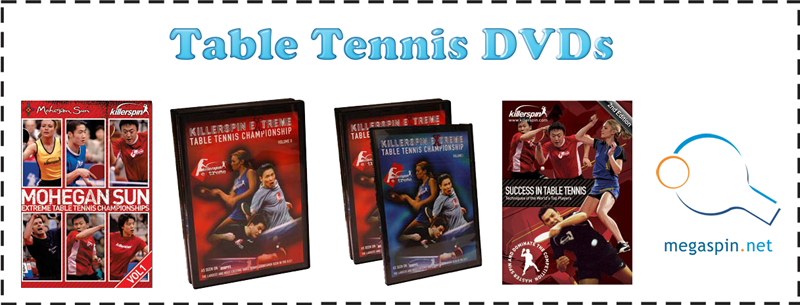
Related post:

Warren Davies
Hi, I’m Warren Davies, a table tennis addict who loves sharing tips, reviews, and everything you need to level up your game. I’ve spent years playing, testing gear, and geeking out over the sport, and I’m here to make things simple and fun for players of all levels. When I’m not writing, you’ll probably find me perfecting my forehand or trying out the latest paddle.

